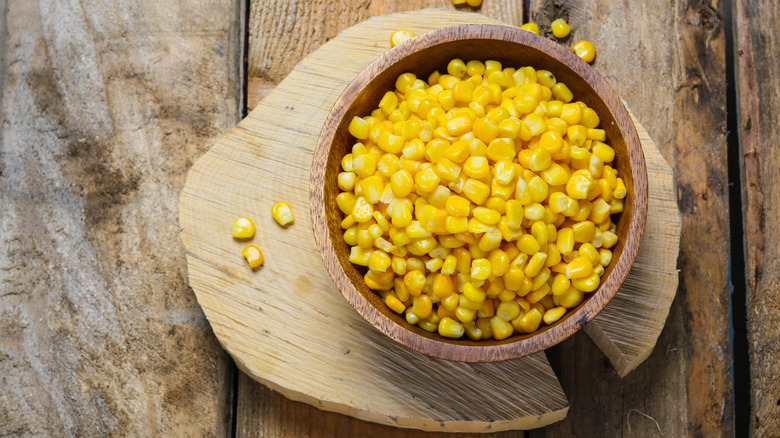Frozen Vs Canned: What's The Best Way To Buy Corn?
There is almost nothing like peak season corn on the cob. Its beautiful, bursting, golden kernels are like the caviar of the soil, requiring little more than a quick boil, and often sweet and fresh enough that you'll want to eschew the traditional butter accompaniment. But corn season comes just once a year, shucking can double its prep time, and some recipes simply aren't improved by even the best corn you can get. And while it might seem like you can reach for the canned or frozen stuff indiscriminately, frozen corn is going to perform better than canned in most cases.
Frozen corn's taste and texture is more similar to that of fresh than the canned alternative. Because canned is typically more processed and more likely to contain additives like sodium than frozen, the latter is just closest to the whole food that grows from the earth. So you'll get more mileage out of frozen, but canned corn, which typically contains about an ear and a half of the veg, has a few uses, too.
When to unleash canned corn, plus some fresher frozen ideas
Rinsed and drained canned corn can actually be great as a topping in dishes like chicken nachos, where it adds a little textural quality and a pop of color but is not expected to be the star. It also appears in plenty of cornbread recipes, which you can always improve by preparing in a skillet. Try to use a canned corn brand high on our ranking for the best chance of success in any case.
You can use frozen corn more or less the same way you would any pile of freshly liberated kernels. It's great defrosted, patted dry, and tossed into a salad or as a taco topping. Because properly prepared frozen corn can also better stand alone, you can serve it as an easy side to any weeknight dinner that needs a quick vegetable addition. Just make sure to avoid the most common frozen corn mistakes to ensure you're getting a close enough farmers market dupe every time.

